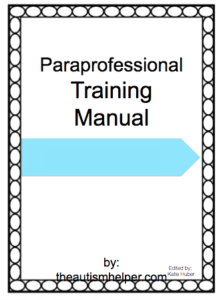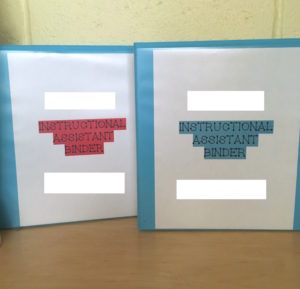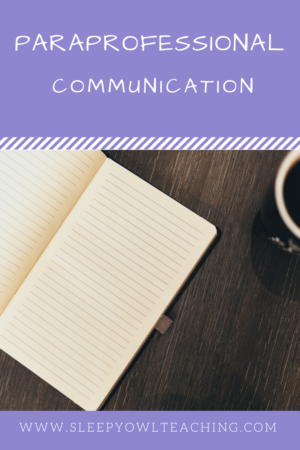If you are like me, you might have some paraprofessionals working in your classroom. Believe me when I say I could not survive without these people. I have wonderful paraprofessionals and they work so hard every day. However, we still need to have rules and guidelines in order to function. Many times when paraprofessionals start (and even when they’ve been working for a while) there are aspects of the classroom and students they are unfamiliar with.
Our paraprofessionals are paid hourly and unfortunately, their hours line up exactly with student hours. This means they aren’t paid to be there before students arrive or after they leave. This leaves very little time for consultation and guidance. Other than their 30-minute lunch break, these people are booked solid all day long. We and the students depend on these people so much, but how do we find the time to communicate? How do we teach them what they need to know in order to help the students and the classroom to the best of their ability?
One of the things I have found most helpful is creating a Paraprofessional Training Manual. Each paraprofessional receives a manual when they start working in our classroom. It contains everything we need them to know, without necessarily having the time to explain it all.
The handbook we use is based on this one by The Autism Helper. It’s been modified to include other pertinent information as well as information on specific disabilities in our classroom.
In no specific order, this is a list of things contained in our handbook:
- All about (insert disability here). I’ve included pages specific to disabilities found in our classroom (Autism, Down Syndrome, etc.). This section also includes information on sensory behaviors as well as communication.
- Your Role as a Classroom Paraprofessional – This includes our school and program rules and expectations. We made a list of “expected” and “unexpected” behaviors. Some of the things on our “don’t do this” list might seem pretty silly (ex. Don’t read the newspaper while you are with students). But trust me, they wouldn’t be on there if they hadn’t happened at some point or other…
- Classroom Basics – this section includes broad information on things like IEPs and visual schedules.
- Problem Behaviors – This is a pretty important section in our binders. We do experience “problem behaviors” in our classroom at times. They can range from silliness to noncompliance, to unsafe behaviors. Not everyone who comes into our classroom has been trained or educated in dealing with behaviors. This section goes over things such as WHY a student may be exhibiting behaviors, what planned ignoring looks like and why it works, and how to deal with an unsafe situation. One of my favorite pieces of information is “How you may accidentally increase problem behaviors”. I know most people working in the classroom would never intentionally cause students to exhibit behaviors, but without specific training, they may not realize that they are contributing to it! This is required reading for all of our paraprofessionals.
- Taking Data – This section goes into detail about the specific ways we take data in our classroom.
- Welcome – not only is this our personal welcome and thanks to our paraprofessionals but it includes information such as how to reach us outside of school and how to call out sick and request a substitute.

This is the basic training manual. As the year goes along and we find interesting articles or other tidbits of information, we add it. This year we added in a prompting hierarchy that we read and thought was a great resource for people who may not realize how much they are prompting students. The important part is that we have a way to “train” our paras without necessarily having to carve out time that we don’t have. Of course, we try to get as much professional development in as we can throughout the year, but this is a good start for us at the beginning of the year.
How do you communicate with your paraprofessionals?
Have a great day,
![]()

